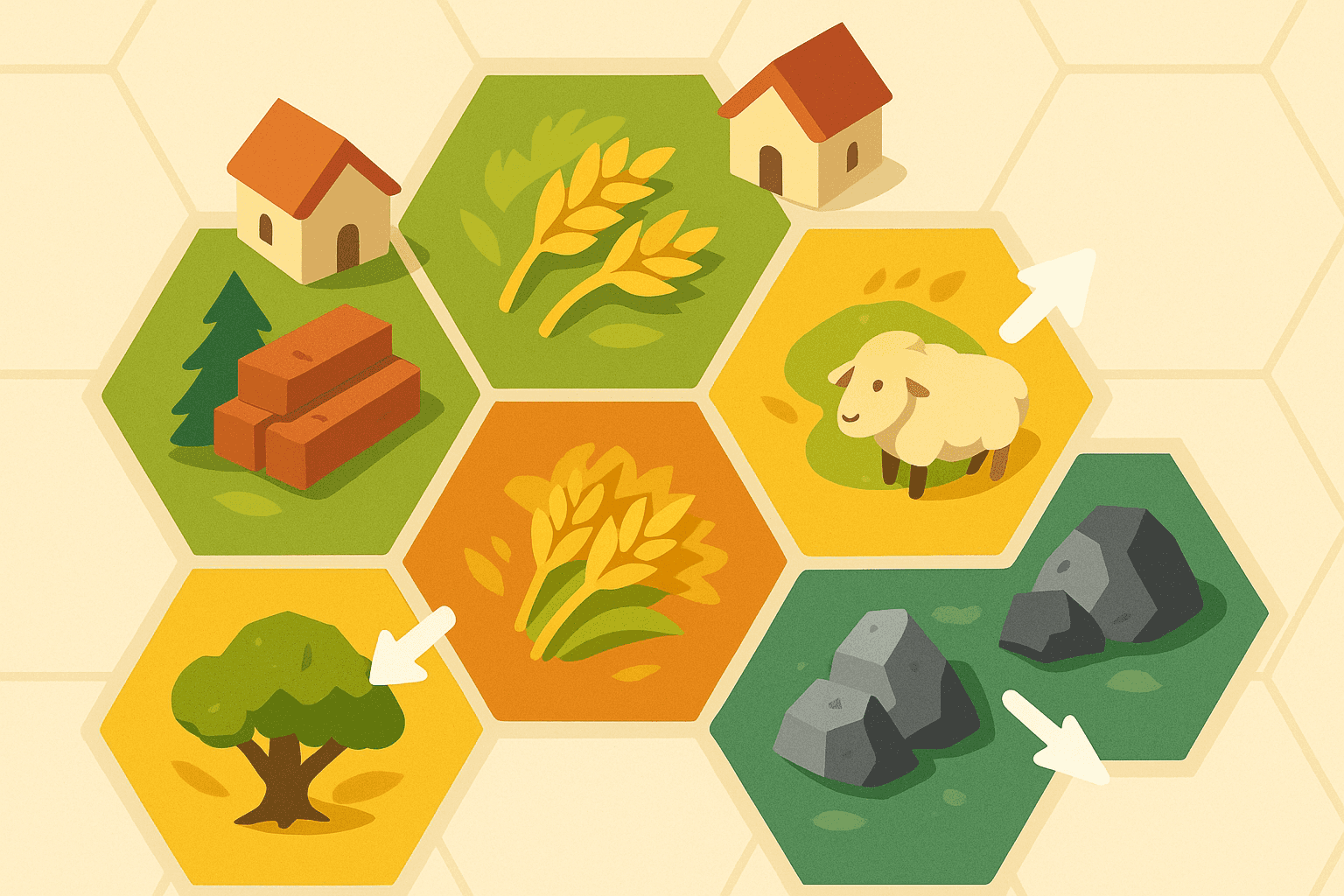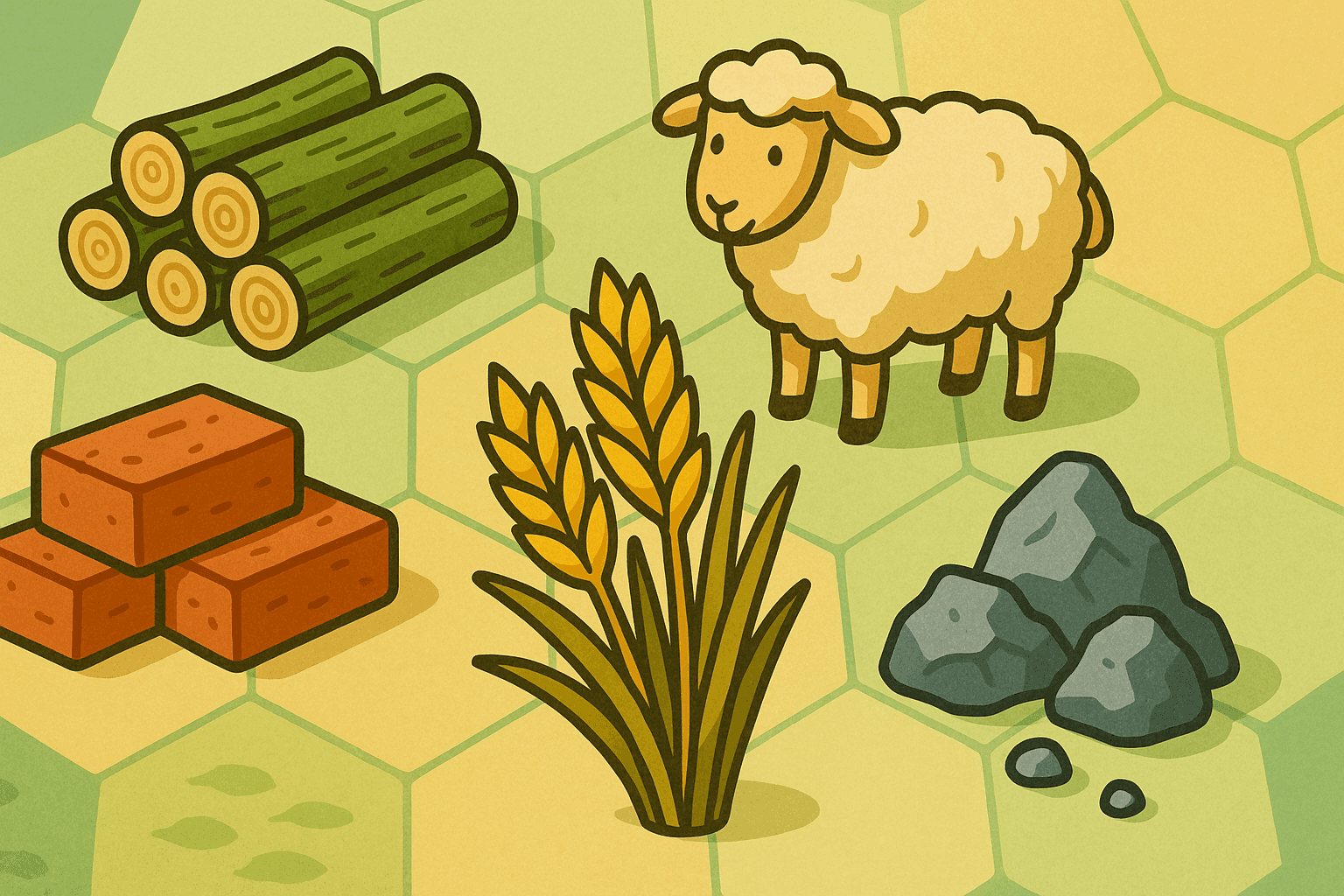
Optimal Settlement Placement in Catan – A Data-Driven Guide
In Catan, few decisions are more important than where you place your starting settlements. A strong opening position gives you better resource production, easier expansions, and a smoother path to victory. On the other hand, poor placement can leave you struggling to build roads, settlements, and cities while depending on trades and luck.
This guide takes a data-driven approach to settlement placement using dice roll probabilities, resource balancing, and proven strategies to help you make smarter choices in every game.
Master the rules first by checking out our complete Catan game rules guide before diving into advanced settlement strategies.
Created By Adam Davis Fernsby
Why Settlement Placement Matters
- Determines which resources you can collect and how frequently
- Impacts your ability to expand early and claim valuable spots
- Affects your long-term growth through cities, development cards, and ports
- Poor choices can leave you resource-locked and dependent on opponents
Mastering settlement placement is the first step toward winning Catan consistently.
Understanding Dice Roll Probabilities
Catan uses two six-sided dice, meaning some numbers are statistically more likely to roll than others. Here’s a breakdown:
| Number | Probability (%) | Expected Rolls per 36 Turns |
|---|---|---|
| 6 or 8 | 13.9% | ~5 times |
| 5 or 9 | 11.1% | ~4 times |
| 4 or 10 | 8.3% | ~3 times |
| 3 or 11 | 5.6% | ~2 times |
| 2 or 12 | 2.8% | ~1 time |
Key Takeaway: Tiles with numbers like 6 and 8 will statistically produce almost twice as often as tiles with 3, 11, 2, or 12.
How to Use This Information
- Prioritize intersections touching 6s, 8s, 5s, and 9s
- Avoid starting on 2s and 12s unless strategically necessary
- Balance high-value numbers with diverse resource access
The Ideal Resource Mix
Even with great numbers, you won’t win without the right resources.
- Aim for at least three different resources between your two starting settlements
- Prioritize brick + wood early for building roads and new settlements
- Ensure access to wheat, critical for settlements, cities, and development cards
- Use ore and sheep strategically depending on your long-term plans
Example Scenario:
- Good mix: Starting on 6-brick, 9-wood, and 8-wheat → balanced production and early expansion power.
- Bad mix: Starting on 11-ore, 4-ore, and 3-sheep → stuck waiting for trades or lucky rolls.
Placement Strategies Based on Data
Prioritize High-Probability Numbers
Choose settlement spots where your total access to 6s, 8s, 5s, and 9s maximizes production potential.
Example: An intersection touching 6-brick, 8-wheat, and 9-wood → ~14 pips total → excellent production.
Target Balanced Intersections
Intersections with three different resources give you flexibility and faster expansion options.
Example: A spot covering 6-brick, 5-sheep, and 9-wheat ensures a steady income across essential materials.
Leverage Trading Opportunities
Sometimes you can’t access everything, and that’s okay. If one resource is scarce, overproduce something valuable and trade for what you lack.
Example: Heavy ore production lets you negotiate better trades for missing brick or wood.
Using the “Pip Count” Method
Number tokens in Catan have dots (pips) representing how frequently they roll:
- 6 or 8 → 5 pips each
- 5 or 9 → 4 pips each
- 4 or 10 → 3 pips each
- 3 or 11 → 2 pips each
- 2 or 12 → 1 pip each
Rule of Thumb:
- Great settlement spots = 10+ pips total
- Elite settlement spots = 12+ pips total
Example:
- Spot 1: 6 (5 pips) + 9 (4 pips) + 5 (4 pips) = 13 pips → Excellent
- Spot 2: 2 (1 pip) + 11 (2 pips) + 3 (2 pips) = 5 pips → Weak
Advanced Tips for Competitive Play
- Block key spots early: Claim high-pip intersections before your opponents.
- Prioritize flexible expansion paths: Don’t trap yourself with limited road options.
- Secure port access: Overproducing one resource + a matching port = strong trading power.
- Use the robber strategically: Target opponents controlling 6s and 8s to slow them down.
Example Scenario – Best vs Worst Start
Player A:
- Starts on 6-brick, 8-wheat, 9-wood
- Produces 3 resources consistently from high-probability tiles
- Builds roads and settlements quickly, setting up future cities
Player B:
- Starts on 2-sheep, 11-ore, 10-brick
- Struggles to get needed resources
- Relies on trades and dice luck, slowing down progress
Result: Player A dominates the early game, while Player B is forced into a defensive position - all because of better settlement placement.
Quick Checklist for Optimal Settlement Placement
- Choose intersections with 10+ total pips
- Prioritize brick + wood + wheat early
- Diversify your resource access across both settlements
- Plan ahead for roads, ports, and expansions
- Use probability and trading leverage to your advantage
Conclusion
Winning in Catan starts with smart settlement placement. By understanding dice probabilities, balancing your resource mix, and thinking ahead, you can consistently produce more, expand faster, and outmaneuver your opponents.
The next time you sit down for a game, evaluate your starting options using this data-driven approach and give yourself the best chance to win.


